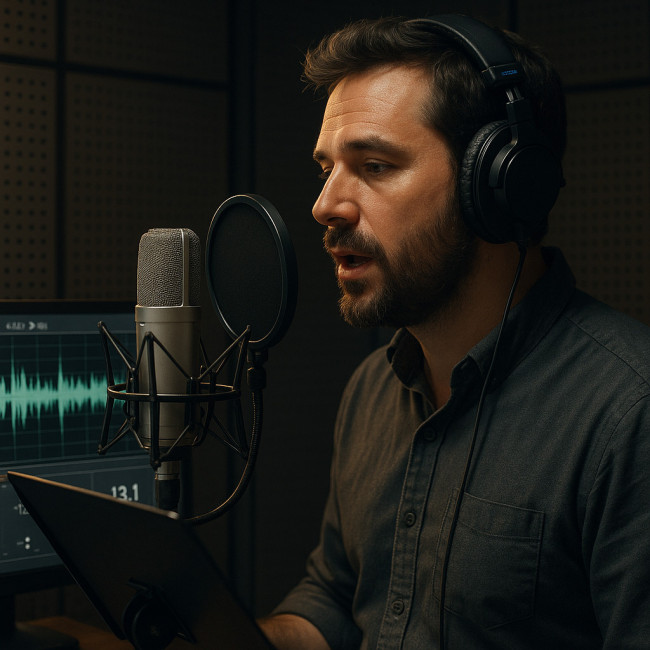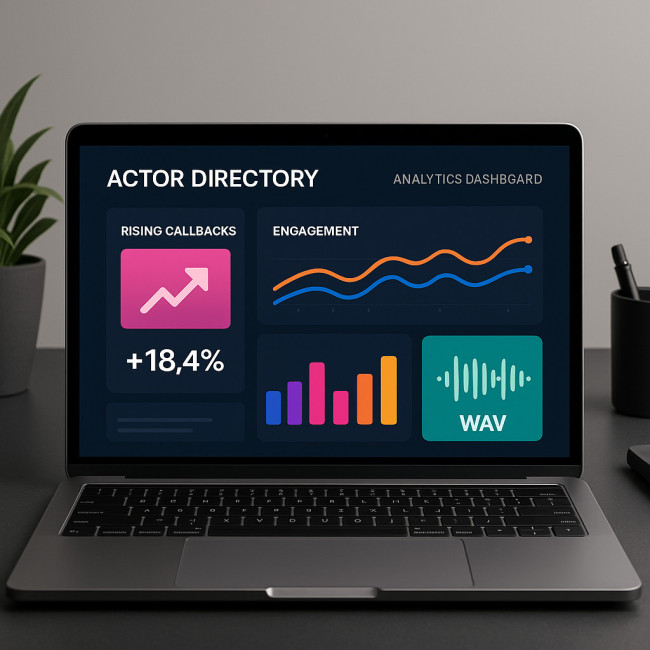Voice demos in actor directories: audio specs that keep agents listening
A spotless voice demo can earn you a callback before a casting director even checks your headshot. This guide shows you exactly which audio specifications, file formats and metadata settings make talent agents hit “play” — and stay. You'll also learn recording workflows, upload tactics for actor directories and quick fixes to common mistakes, so your voice demos rise above the noise.
Why agents decide in the first seven seconds
Busy representatives skim hundreds of clips daily. Research from leading casting platforms shows that 75 % of agents stop listening after seven seconds if the recording quality disappoints. A demo that meets professional audio specs signals reliability and saves them time. Combine this with smart profile tweaks from profile optimisation techniques, and you instantly lift your ranking in search results.
Essential audio specs that pass the headphone test
| Spec | Minimum Acceptable | Ideal for Voice Demos | Why It Matters |
|---|---|---|---|
| Sample Rate | 44.1 kHz | 48 kHz | Captures high-frequency nuances important for commercial reads. |
| Bit Depth | 16-bit | 24-bit | Higher bit depth reduces quantisation noise, keeping sibilants crisp. |
| Loudness | −20 LUFS | −16 LUFS mono | Matches streaming standards so agents don't ride the volume knob. |
| Noise Floor | −55 dB | < −60 dB | A silent background ensures focus stays on your performance. |
| File Format | 192 kbps MP3 | 48 kHz/24-bit WAV | Lossless WAV keeps dynamics intact; MP3 works as a lighter backup. |
Sample rate and bit depth
Record at 48 kHz / 24-bit if possible. Most digital audio workstations (DAWs) default to these values, aligning with film and streaming specs. Down-convert to 44.1 kHz / 16-bit only when a directory restricts file size.
Loudness target
Aim for −16 LUFS integrated with peaks around −1 dBTP. Consistent loudness prevents agents from adjusting volume between demos. Use LUFS meters in free tools such as Youlean Loudness Meter to check compliance.
Noise floor and room tone
A treated space and a cardioid microphone help you achieve a noise floor below −60 dB. Capture 10 seconds of room tone at the start; it helps engineers apply better noise reduction later.
File format and size
Many directories now accept up to 50 MB per file. Upload a high-resolution WAV first, then a fallback 320 kbps MP3 for mobile playback. That dual strategy mirrors advice in audio-mixing optimisation for showreels.
Naming convention and metadata
Use a consistent pattern: Firstname_Lastname_VoiceDemo_Commercial_48k24b.wav. Embed ID3 tags—Genre, Comments (agency contact) and Artwork (headshot). Proper metadata improves directory search accuracy, similar to age-range profile tagging.
Recording workflow: from script to final WAV
- Script selection: 60–90 seconds total, split across three contrasting styles (commercial, corporate, character).
- Mic placement: 15–20 cm from the pop filter to avoid plosives.
- Gain staging: Peaks at −12 dB during recording to leave headroom.
- Editing: Remove breaths with strip-silence, but keep natural pauses.
- Processing chain: EQ (high-pass at 80 Hz), gentle compression (3:1 ratio, 3 dB GR), de-esser.
- Loudness normalisation: Bounce to −16 LUFS.
- Quality check: Listen on studio monitors, earbuds and a smartphone speaker.
Follow this flow and you'll spend less time troubleshooting and more time pitching through the Artfolio actor directory, where clear audio often translates to higher shortlist rates.
Upload tips: make directories boost your signal
- Prioritise WAV: Choose the highest-quality file first; the platform will create lower-resolution streams for quick previews.
- Craft a punchy title: “Sophia Reyes — Conversational Commercial Voice Demo — 48 kHz WAV” tells agents exactly what to expect.
- Sequence matters: Place your strongest style first, mirroring the hierarchy used in geo-targeted directory profiles.
- Thumbnail synergy: Match the audio demo with a relevant still (e.g., smiling lifestyle shot for commercial read).
- Keep versions tidy: Archive outdated demos to avoid confusing recruiters. Fresh uploads often climb algorithmic rankings.
Common mistakes and quick fixes

Mistake 1 — Clipped peaks: If levels exceed 0 dB, re-record; limiting can't restore lost transients. Mistake 2 — Background hiss: Identify noisy gear by recording silence. Swap cables or use balanced XLR lines. Mistake 3 — Excessive post-processing: Over-compressed demos sound lifeless and fatiguing, especially through earbuds. Aim for 3 dB of gain reduction, not 10 dB, and always reference commercial spots at similar loudness to keep your dynamics natural. By catching these errors early, you protect both your credibility and the agent's sensitive ears, ensuring they stay focused on your performance rather than on technical flaws that could have been avoided with a disciplined workflow and critical listening habits.
Need a fast second opinion? Politely share your track using the guidelines in direct-messaging etiquette. You'll get constructive feedback without alienating contacts.
Ready to test your knowledge?
FAQ
- How long should a voice demo be?
- Keep it between 60 and 90 seconds, with your best 20 seconds first.
- Can I upload multiple demos?
- Yes. Separate commercial, narration and character reels so agents can jump straight to what they need.
- Is MP3 ever acceptable?
- High-bit-rate (320 kbps) MP3 is fine for quick previews, but always provide a WAV for download.
- Do I need to normalise every clip?
- Absolutely. Normalisation to −16 LUFS ensures consistent playback across all platforms.
Next step: let your voice demo work while you sleep

Implement these specs today, refresh your actor directory profile and monitor engagement metrics over the next week. Crisp audio combined with strategic tagging can lift your callback rate dramatically by signalling both technical competence and artistic versatility to busy casting professionals who make split-second decisions. Ready to go further? Explore regional opportunities in geo-targeted casting filters and watch your inbox fill with audition requests as algorithms prioritise your optimised demos over outdated or poorly tagged competitors, effectively letting your voice work around the clock.











